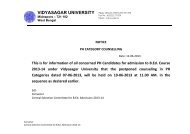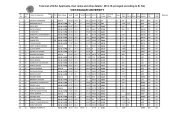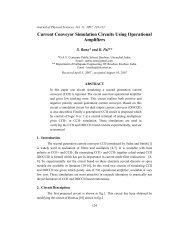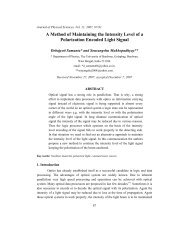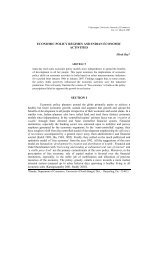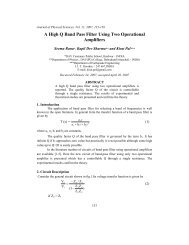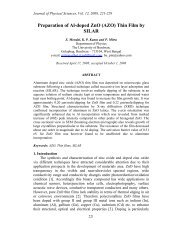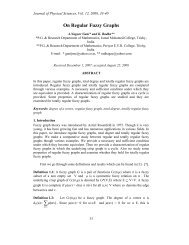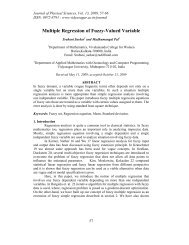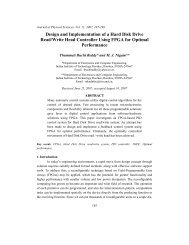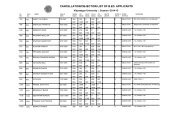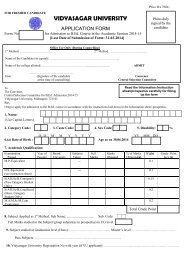VIDYASAGAR UNIVERSITY JOURNAL OF COMMERCE
VIDYASAGAR UNIVERSITY JOURNAL OF COMMERCE
VIDYASAGAR UNIVERSITY JOURNAL OF COMMERCE
Create successful ePaper yourself
Turn your PDF publications into a flip-book with our unique Google optimized e-Paper software.
Debdas Rakshit, Chanchal Chatterjee<br />
From the above analysis, the most worth mentioning point is that, there are some areas<br />
where ICICI Bank has some weaknesses but Bank of Madura has strengths over such areas.<br />
For instance, ICICI Bank lacks adequate experience in banking business but the other one<br />
(i.e., Bank of Madura) has long experience (over 57 years) in this field. High cost of funds is<br />
the most significant weakness of ICICI Bank while Bank of Madura was enjoying the<br />
strength arising out of the lowest cost of deposits around the country with the help of<br />
efficient cash management system. On the other side of the coin, Bank of Madura has<br />
limitations over some segments but ICICI Bank enjoys strengths on such segments. For<br />
example, Bank of Madura was suffering from the severe problem of declining trend in<br />
profitability but ICICI Bank is growing at a faster rate compared to the industry growth rate<br />
with excellent profitability. Secondly, Bank of Madura lacked adequate and modern<br />
technology based infrastructure. On the other hand, ICICI Bank has adopted excellent,<br />
modern and updated technology and is providing distinct competitive edge and excellent<br />
customer services. Moreover, Bank of Madura did not have diversified lines of product<br />
portfolio, while ICICI Bank has such quality (i.e., diversified lines of portfolio). Hence, the<br />
weaknesses of one bank can be set off against the strengths of the other bank and thereby the<br />
total value of the merged enterprise can be enhanced with the help of the strategy of<br />
corporate restructuring through merger. ICICI Bank has adopted this strategy of corporate<br />
restructuring for achieving such benefits.<br />
Computations and Major Findings<br />
Table- 1:<br />
Financial Year Earning Per ROI EVA (Rs in crore)<br />
Share (EPS) (Rs.) (%)<br />
1995-1996 1.10 6.65 -4.57<br />
1996-1997 2.68 8.80 44.18<br />
1997-1998 2.95 7.20 62.28<br />
1998-1999 3.72 6.92 146.08<br />
1999-2000 5.21 6.17 124.84<br />
2000-2001 7.96 4.91 201.90<br />
2001-2002 11.52 1.94 -1645.00<br />
2002-2003 18.73 4.37 -141.83<br />
2003-2004 25.43 4.56 568.84<br />
2004-2005 25.99 3.77 532.97<br />
From the above table, it is evident that, there is a continuous increasing trend in earnings per<br />
share of the company. The average EPS of the post-merger period is Rs 17.73, which is<br />
almost 6 times of the average EPS corresponding to the pre-merger period (Rs 3.13). Hence,<br />
if EPS is taken as a measure of profitability of the bank then the study has registered a<br />
continuous improving trend in corporate profitability. However, the average ROI of the postmerger<br />
period (3.97%) is almost half of the average ROI of the pre-merger period (7.15%).<br />
Vidyasagar University Journal of Commerce 85



